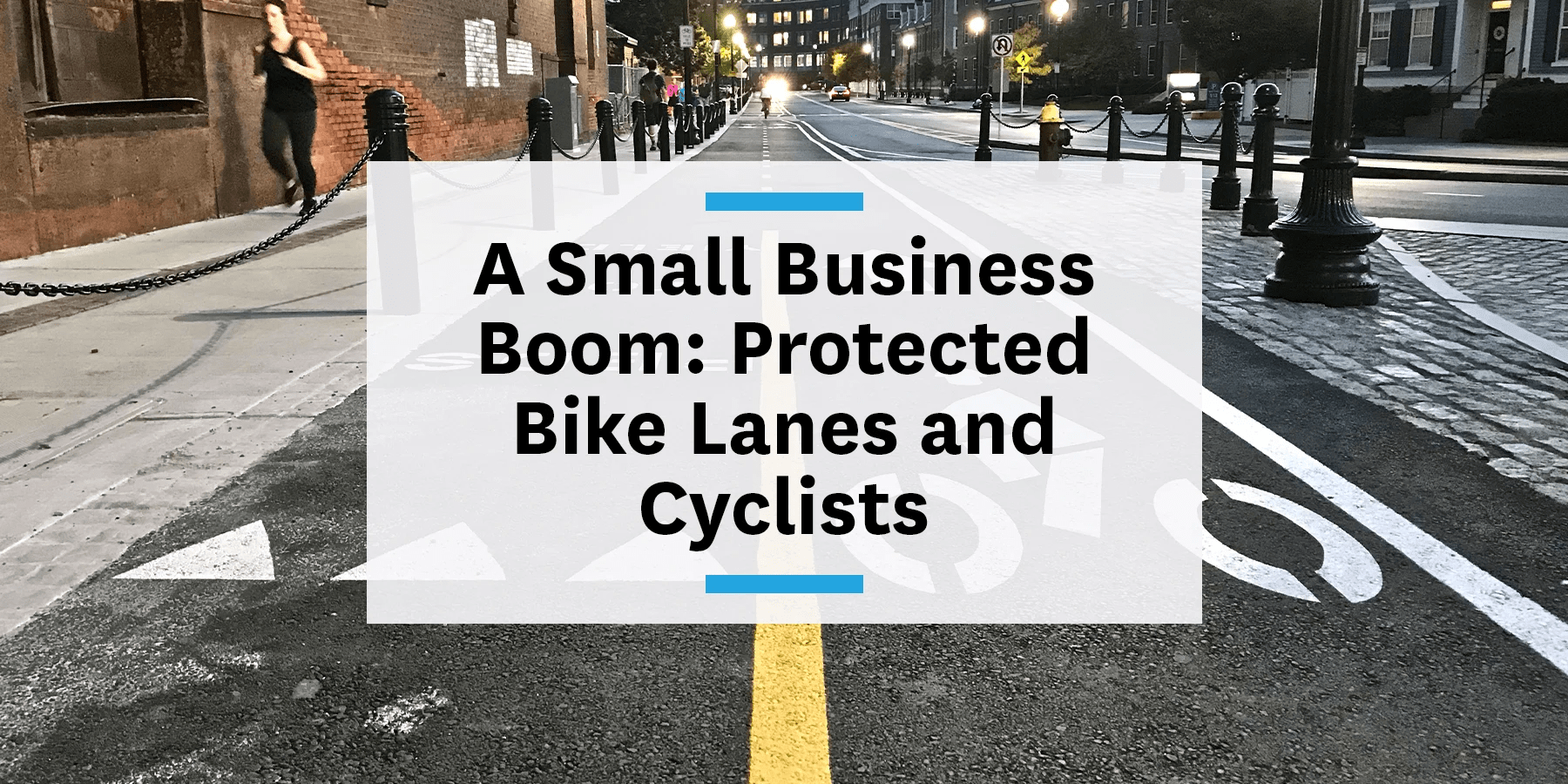“It’s as easy as riding a bike,” is a cliche that has been in our vocabulary since the wheel was invented. The reason it has stuck is because once you learn, you never forget! There’s no license required, no test to pass, and no insurance needed, unlike its motorized counterpart. Cars are expensive, dangerous, and bad for the environment, and yet driving is more encouraged than biking. But that’s all changing – even if it’s a slow change.

Making streets safer for cyclists and pedestrians is an issue faced in cities around the country. Biking is one of the most sustainable forms of transportation, but due to lack of space in car-centric cities, people are often hesitant to opt for a bike. Protected bike lanes provide safe riding conditions, benefit local businesses, and increase ridership.
Protect the bikes
Let’s first cover the difference between a bike lane and a protected bike lane. A bike lane is an area – usually marked by paint and a bike icon – of the road, dedicated to cyclists. A protected bike lane is an area of the road physically divided from motorways by barriers, including delineator posts, turtle bumps, concrete barriers, bollards, and more. The more space and protection bike lanes have from vehicle lanes, the safer they are for cyclists
Safety first
We’re going to come out and state the obvious: Bike lanes make safer conditions for cyclists, pedestrians, and drivers. In fact, fatal crashes dropped by 44 percent in cities with a strong presence of protected bike lanes compared to cities without them. When cyclists and pedestrians are actively separated from cars and other vehicles, there’s less of a chance for not just fatal accidents, but accidents as a whole.
Bike lanes make sidewalks safer as well. Providing safer riding conditions on the road eliminates the need for cyclists to ride on sidewalks, creating safer conditions for pedestrians. Although getting hit by a bicycle while walking isn’t life-threatening, serious injuries can occur – stemming from a situation that never should have existed in the first place.
Get on your bikes and ride
When bicyclists have safer conditions in which to ride, they are more willing to actually ride their bikes. 54 percent of people living in the US said they want to bike to work, but don’t because of safety concerns, and 46 percent said they would ride with a physical barrier separating them from vehicle lanes. Cities that have added protected bike lanes have seen ridership increase anywhere from 21 and 171 percent.
Access to bikes has also contributed to higher ridership. There were only 55 bikeshare systems in the US in 2016, a number that nearly doubled to more than 100 in 2018. Easier access means more trips, and when less-experienced cyclists are on the road, more safety measures need to be taken. Electric scooters have joined the mix too. More sophisticated bike and mobility lanes need to be implemented to take into account increased mobility options
Good for business
Getting rid of street parking to add bike lanes is a big, emotionally charged pill to swallow for residents, employees, and employers – especially small businesses. The idea that fewer parking spots means fewer customers is held by many small business owners. Fortunately for them, the opposite is actually true! More bike lanes and less street parking has proven to benefit small businesses.
Toronto replaced 136 street parking spaces with a 1.5-mile bike lane in a busy shopping and dining area. Many area business owners initially had concerns about the loss of customers and money they believed would follow. Instead, the businesses where the parking spots were removed saw more customers, made more money, and more frequently had customers.
Toronto isn’t alone in improved business due to bike lanes! There are protected bike lanes on First and Second avenues in New York’s East Village. On these streets, cyclists spent more money on average than drivers did. A study done in Portland, Oregon, showed that while cyclists spent less per trip on average, they made more trips and therefore spent more money over time.
Park it there
When residents bike to a restaurant or retail store, it reduces the overall need for car parking – especially street parking. The reason drivers love street parking is because of the convenience it provides — if they can find a spot and if the spot is near their destination. Typically, that doesn’t end up being the case. In central shopping and dining areas, there are already more than enough spots for cars in expensive off-street parking lots built just for them.
Not only are parking lots expensive to build, they are usually built in excess. In some cities, the amount of parking spots per household is a little disproportionate – to say the least. In Philadelphia, there are slightly more than three spots per household, but in Jackson, Wyoming, there are more than 27 parking spots per household. That’s equal to nearly $200,000 per spot! The average cost of a bike rack is $660, and it can hold up to 10 or so bikes, give or take. We’ll let you do the math.
End of the bike lane
Bike lanes are a big change that’s been a long time coming, and cities are finally realizing that with actionable change. New York’s planning to invest $1.7 billion over the next 10 years to build 250 miles of protected bike lanes for its residents. The reason is simple: Bikes are safer and more sustainable, and cause less road wear and tear on roads. Cities were built to accommodate cars, but with the rise of bikeshare, scooters, and improvements to public transit, it’s time for cities to accommodate mobility.




